Do you want to learn how to build muscle using
You’re in the right place.
After reading this post, you will learn
- How to build muscle mass using bands,
- Which bands you should and shouldn’t get, and
- The 21 best resistance band exercises for each muscle group!
You’ll also get an efficient band workout you can do anywhere!
Let’s dive right in.
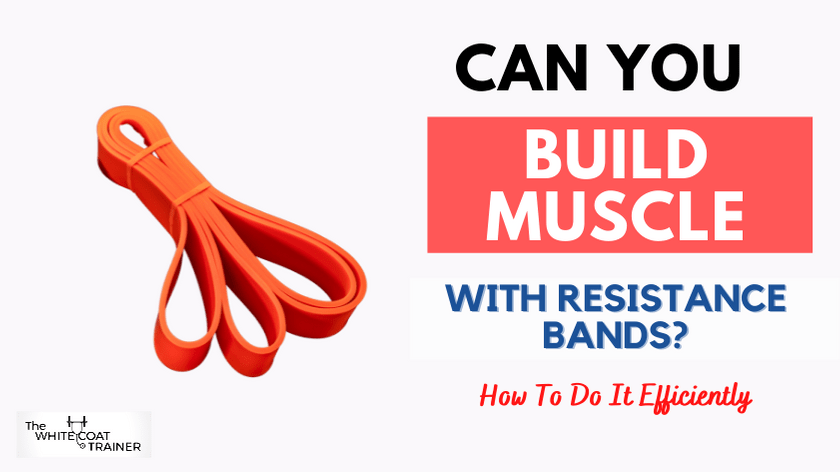
Can you Build Muscle With Resistance Bands ?
It is possible to build muscle with
- A Stimulus,
- Proper Recovery, and
- Muscular Adaptation
In terms of building muscle, the stimulus you need is muscular tension. It doesn’t matter if that tension comes from gravity, external weights, or a resistance band.
As long as the stimulus is appropriate, your muscles will be forced to respond.
After the stimulation, comes recovery.
The recovery phase includes adequate sleep, proper nutrition, and sufficient water intake. This is the only way your muscles can rebuild themselves stronger than before.
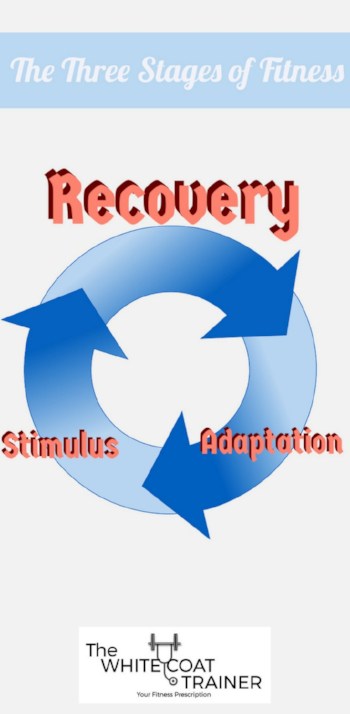
Without proper recovery, your muscles will never adapt.
Adaptation is the final step of the muscle-building sequence. If you consistently provide your muscles with an appropriate stimulus, you will eventually adapt by building muscle that is bigger and stronger.
Bands, just like weights, can provide your body with a sufficient stimulus to induce muscle growth. [1]
Are Resistance Bands Better Than Free Weights?
So if
If you are a complete beginner and you want an easy way to start training, bands are a great option.
If you are more advanced, you can still use bands to continue progressing, but you will have to become creative.
It is much easier to use calisthenics or external weights to continue increasing muscle mass.
With that said, they do offer some great benefits.
Benefits of Resistance Band Training
Bands are great for beginners:
Bands are portable:
Bands are extremely portable. They hardly take up any space and provide you with numerous exercises to choose from.
Plus, you can do a full-body resistance band workout right from home!
They are easy on the joints:
The other major advantage of bands is that they are very safe to use.
This is especially true if you have joint issues or are recovering from an injury. They allow you to overload your muscles with an appropriate amount of tension without the pressure of actual weights holding you down.
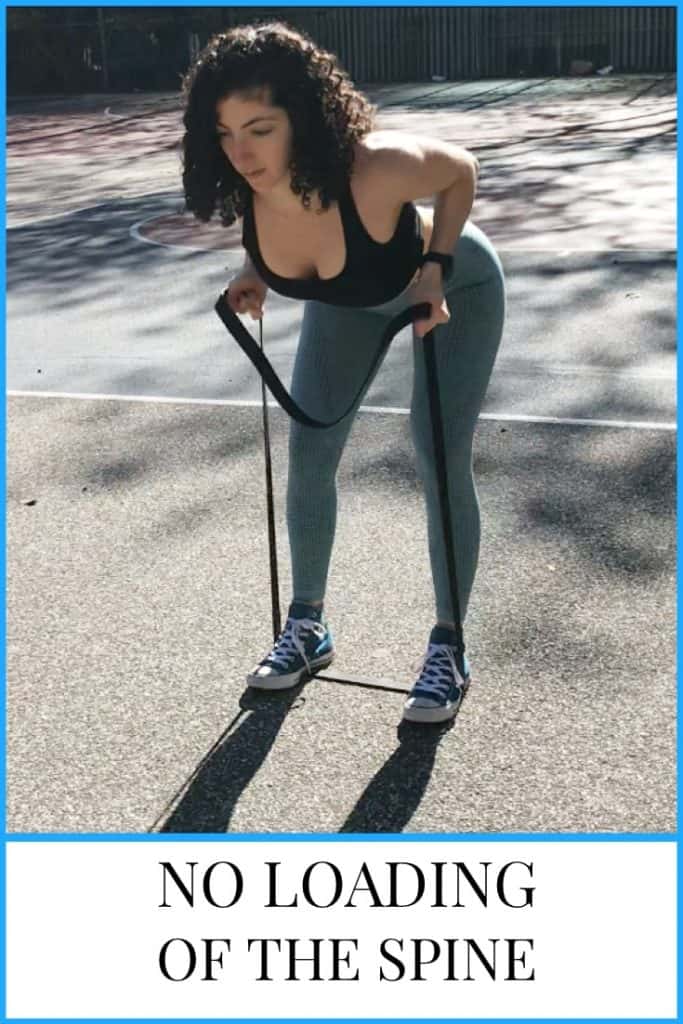
Constant tension at the top:
Bands accommodate resistance.
This means your muscles have to maintain constant tension throughout the entire range of motion. This is especially true at the top/end range, where maximum tension is being applied by the fully stretched resistance band.
With weights, it’s easy to get relaxed at the top of the movement where tension is the lowest.
You cannot cheat with bands
There are many different ways you can cheat with weights and bodyweight exercises.
You can use momentum, improper body positions, and a shorter range of motion. It is much more difficult to do these things with bands.
The band will either stretch to its full capacity or not.
Multiple planes of movement:
Weights provide tension through gravity. Therefore, you are limited to training only in a vertical plane.
Bands, on the other hand, do not have this limitation. They provide tension through elasticity.
You can anchor a resistance band in front of you, behind you, or above you, which creates resistance in multiple planes. You are not limited to moving in an up and down motion.
With that said, there are some negatives to using bands. Here are the main disadvantages.
Disadvantages of Resistance Band Training
You outgrow small bands quick:
Bands usually come in about 4-5 different strength levels.
As a beginner, it is best to start with the smallest bands first, as these provide the least resistance.
As you get stronger, you will notice that you will outgrow the small bands quickly. I.e. they won’t provide enough resistance to elicit a proper stimulus from your muscles.
It’s the same as lifting a 5 lb dumbbell over and over and expecting to get stronger. To vary the resistance you will need to modify your hand and foot positioning.
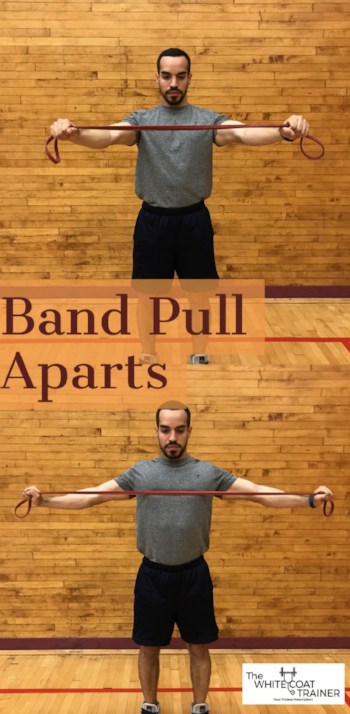
Big bands are really strong:
On that same token, the bigger bands are often way too strong.
After you outgrow the smallest band, you will be able to start using the second smallest band easily.
However, the third and fourth bands provide A LOT of heavy resistance.
It’s almost impossible to do a lot of the exercises because of how resistant the bands are.
Difficult to measure progress:
Lastly, it’s difficult to keep track of your progress when using
There’s no way to measure the resistance level that you are actually using.
Also, any small variation in hand or foot placement can change the resistance significantly.
If you’re the type of person who likes to write down your progress in each workout – bands will be a pain in the neck.
Can be ineffective if you don’t position them properly:
In order to get the most out of bands, it is important that you position them correctly.
You can easily make the mistake of allowing the band to have too much slack, especially at the beginning of the movement. This is particularly true for squatting exercises. [2]
You can combat this by changing your foot positioning on the band, but it can become cumbersome to try and perfect the variable resistance throughout the range of motion.
They can snap:
Lastly, always always always inspect your bands before using them.
Thankfully, this is uncommon, as bands designed by reputable companies will be very durable.
With that said, always make sure the integrity of the band is intact. If a band snaps while you are using it, you can seriously injure yourself.
Avoid over-stretching your bands, and do not allow them to rub against rough surfaces.
So, can bands replace weights?
In theory, they can.
Bands are more effective at building muscle mass the closer you are to the beginner stage. As you get stronger, you will need to use stronger
Either way, something is always better than nothing in the world of fitness.
If you can consistently stick to a routine that uses only bands, then go for it. If you’re stuck at home and have nothing else, then please, use them regularly!
I personally prefer weight training and calisthenics.
Which Resistance Bands Should You Get?
There are two major types of
I highly recommend that you purchase loop
They can be tied against structures and can be used with a variety of different hand and foot positions.
In contrast, the handles on tube style bands will limit the number of ways that you can use the band.
I highly recommend that you get at least 3-4 different colors/strengths of closed-loop bands.
These are the ones I recommend:
 Resistance Band Set
Resistance Band Set
Long closed-loop resistance band set (4-pack). These bands are lightweight, portable, and highly versatile.
So now let’s go over the best exercises you can do with these bands.
The Best Resistance Band Exercises
Okay so now, let’s get to the main purpose of this post.
The exercises.
Below you will find a comprehensive list of resistance band exercises you can do anywhere.
Provided you have somewhere to loop the band around.
Below are videos showing all of the movements, followed by pictures of each individual resistance band exercise.
Upper Body Compound Exercise Video
Upper Body Isolation Exercise Video
Here are the exercises broken down by muscle group:
Resistance Band Exercises For Chest and Triceps (Horizontal Push)
Pushups
Wrap the band around your upper back and place your hands through the loops on either side as you perform the push-up.

Bench Press / Floor Press
Similar to the push-up, wrap the band around your upper back and grab the two ends of the loop. Now lie on your back and press the bands up towards the sky.
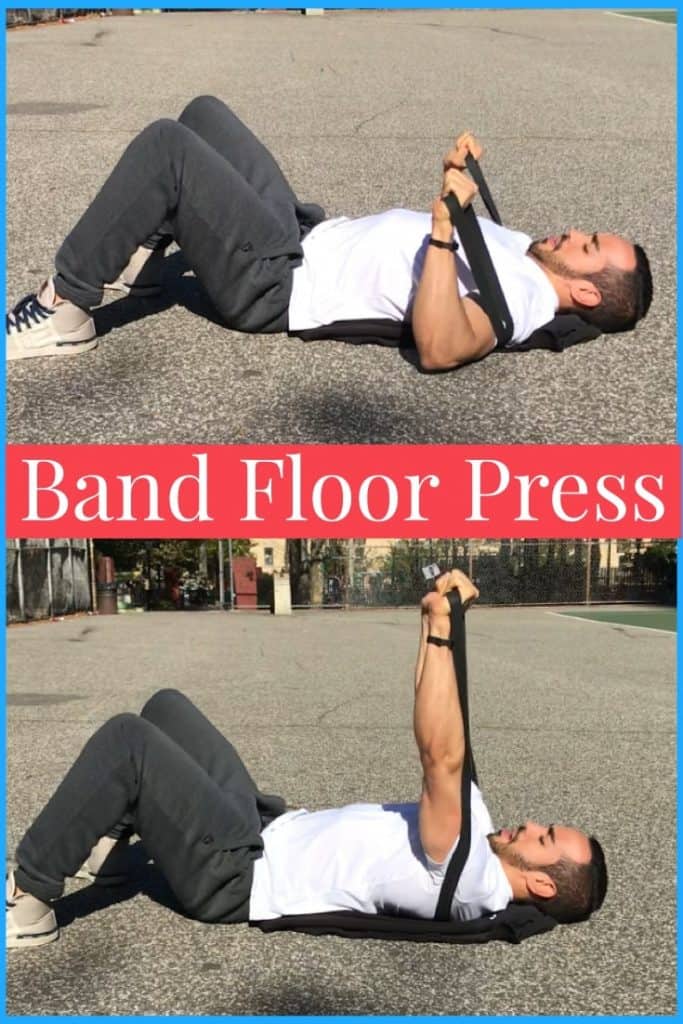
Chest Press
Wrap the band on a sturdy pole and put your hands through the two loops. Now face away from the pole and press your arms straight out.
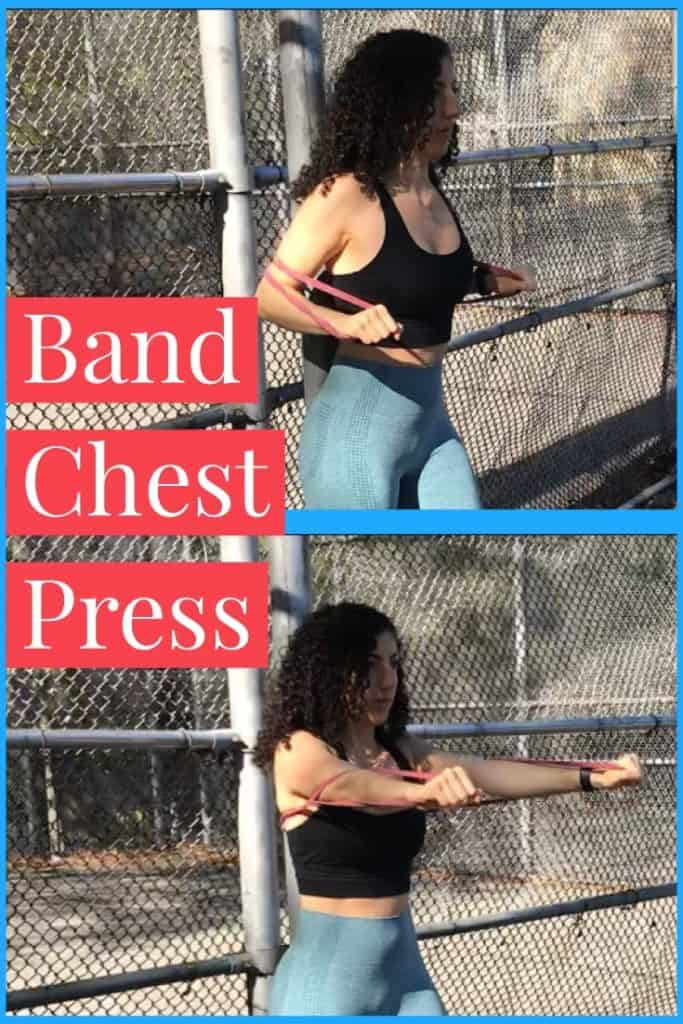
Resistance Band Exercises For Shoulders (Vertical Push)
Overhead Press
Stand on one loop of the band with a shoulder-width stance and grab the other loop with your palms facing forward. Press the band over your head.
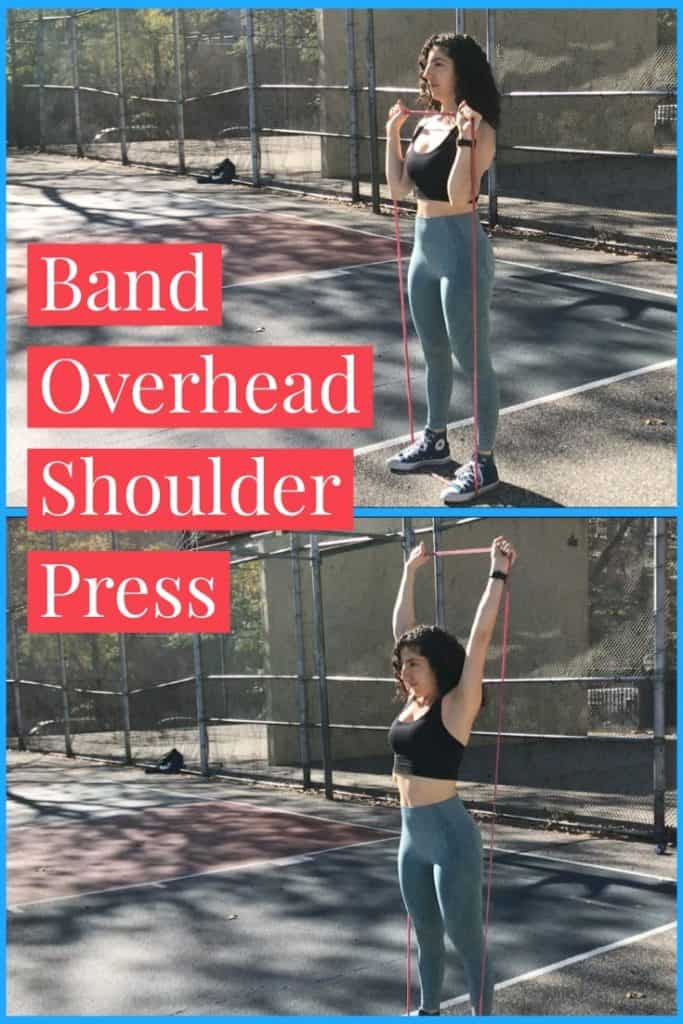
Incline Chest Press
Wrap the band on a sturdy pole and put your hands through the two loops. Facing away from the pole, press forward and up in a diagonal orientation.
Resistance Band Exercises For Back (Horizontal and Vertical Pulls)
Bent-Over Row
Stand on one loop of the band with a shoulder-width stance and grab the other loop with your palms facing forward. From a bent-over position, pull the band up towards your waistline.
The wider you stand, and the lower down you grab the loop, the more resistance the band will provide.
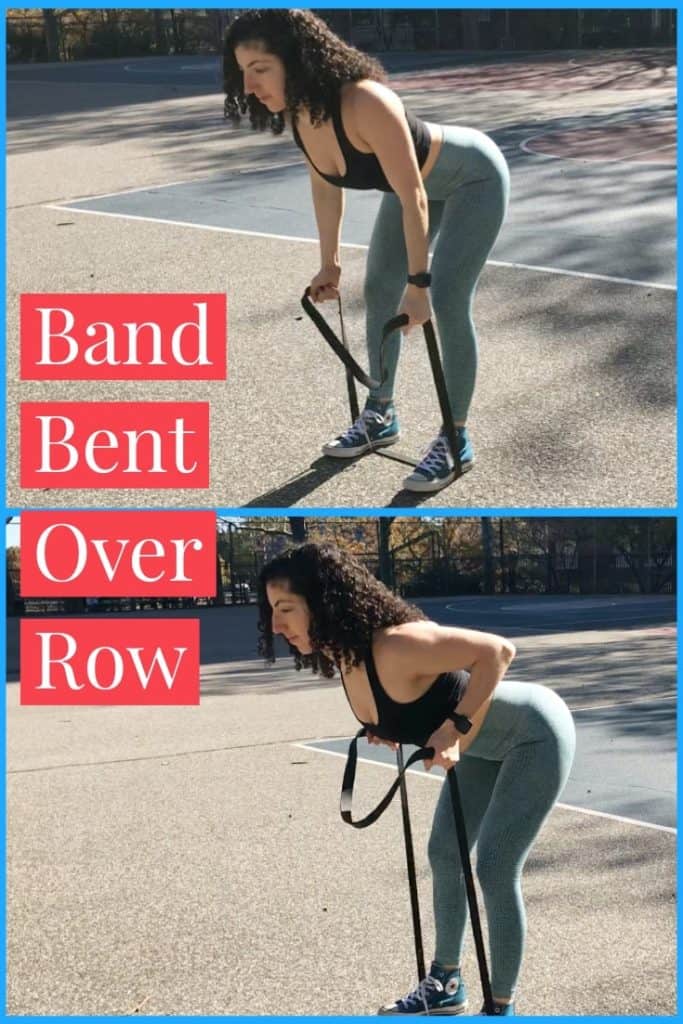
Lat Pulldown
Loop the band around a tall horizontal bar and grab the other end of the loop with both hands. From here, pull the band down as if you’re doing a pull-up.
You can kneel down to increase the resistance on the band as well.
Alternatively, you can just place the middle of the band over the bar and grab both loops for a more challenging variation.
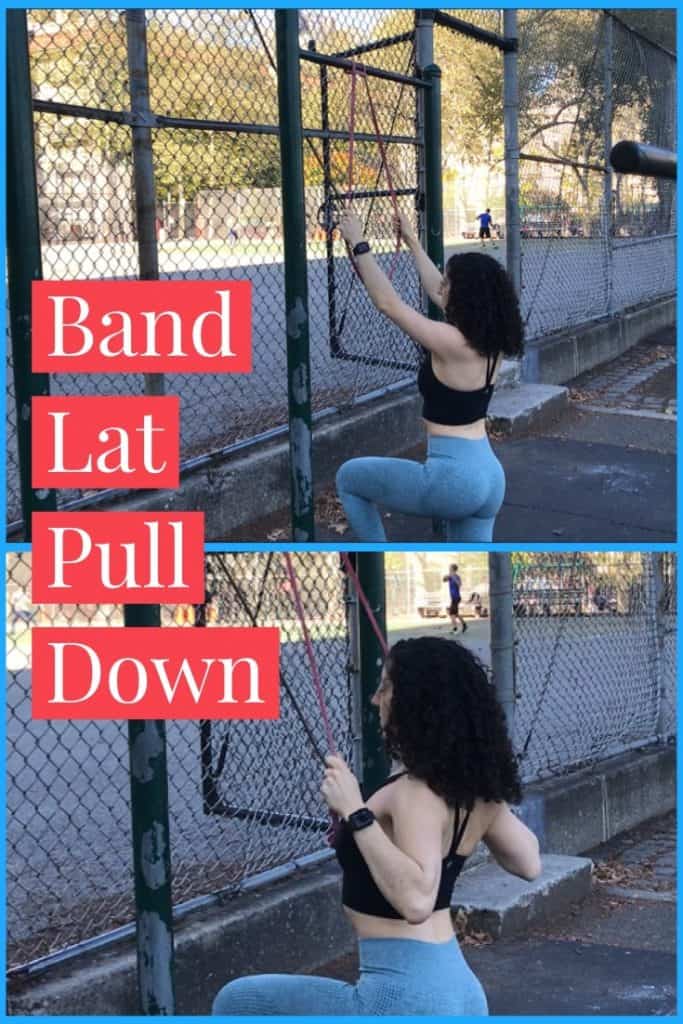
Band Pull-Aparts
Grab both ends of the band with the loops dangling on each side at chest level. The closer you grip the band, the more resistance it will provide.
Pull the band apart while keeping your elbows straight the entire time.
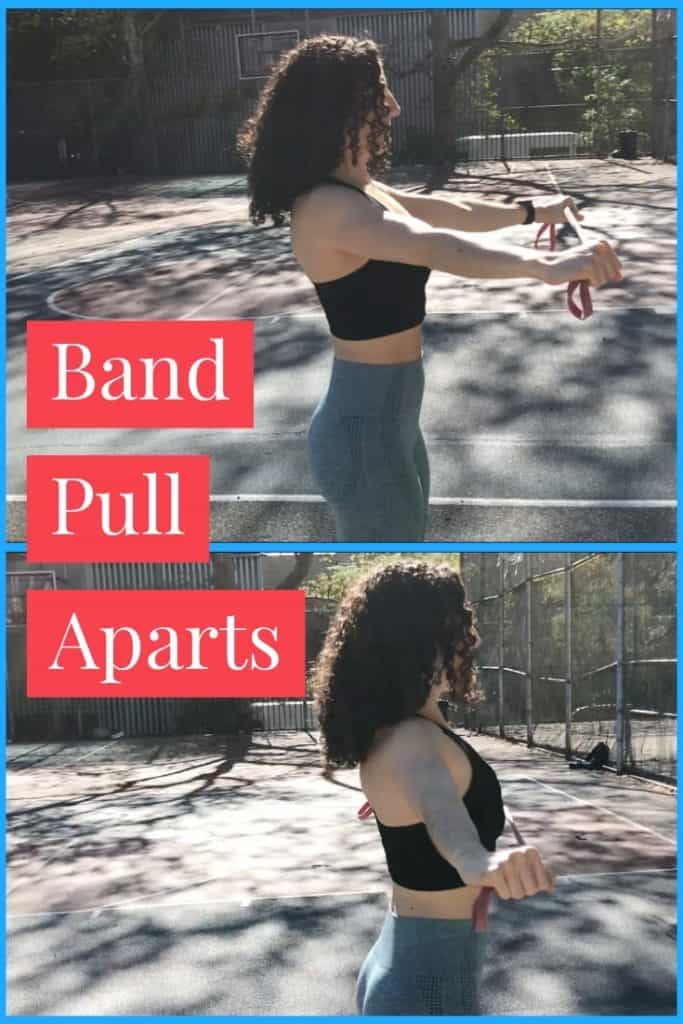
Rear Delt Flys
Stand on one loop and grab the other loop with your opposite hand. Bend over slightly and lift the band directly out to your side.
You should feel this in the back of your shoulder.
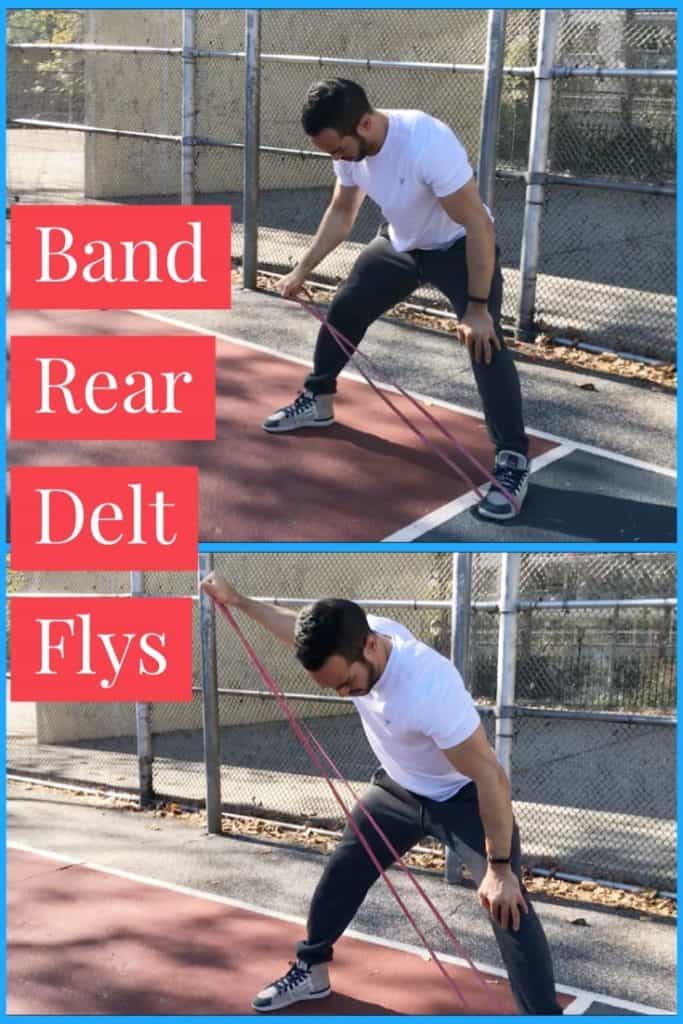
Face Pulls
Loop one end of the band around a sturdy pole and grab the other loop with both hands.
Pull the band towards your face and externally rotate your shoulders.
Alternatively, you can just place the middle of the band around the pole and grab both loops for a more challenging variation.
Resistance Band Exercises For Arms
Bicep Curl
Stand on one loop of the band with a shoulder-width stance and grab the other loop with your palms facing forward. The wider you stand the more resistance the band will provide.
Curl the bands up toward your shoulders while keeping your elbows in place.
Alternatively, you can do each arm individually for a more challenging exercise.
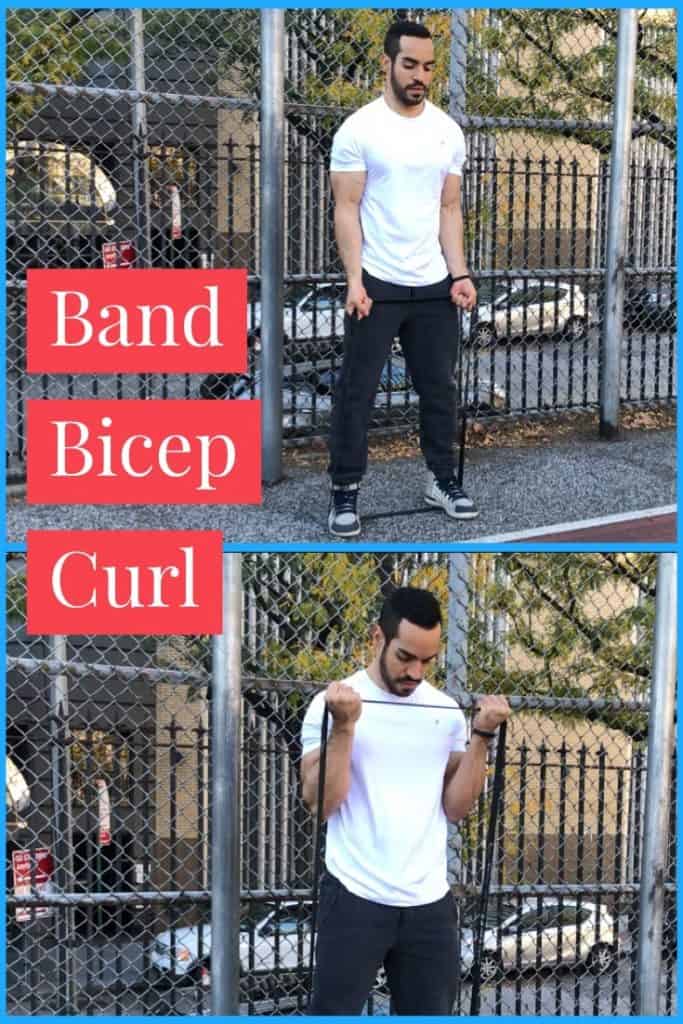
Lateral Raises
Stand on one loop and grab the other loop with your opposite hand to provide enough tension throughout the full range of motion.
Raise your arm straight out to the side against the resistance from the band.
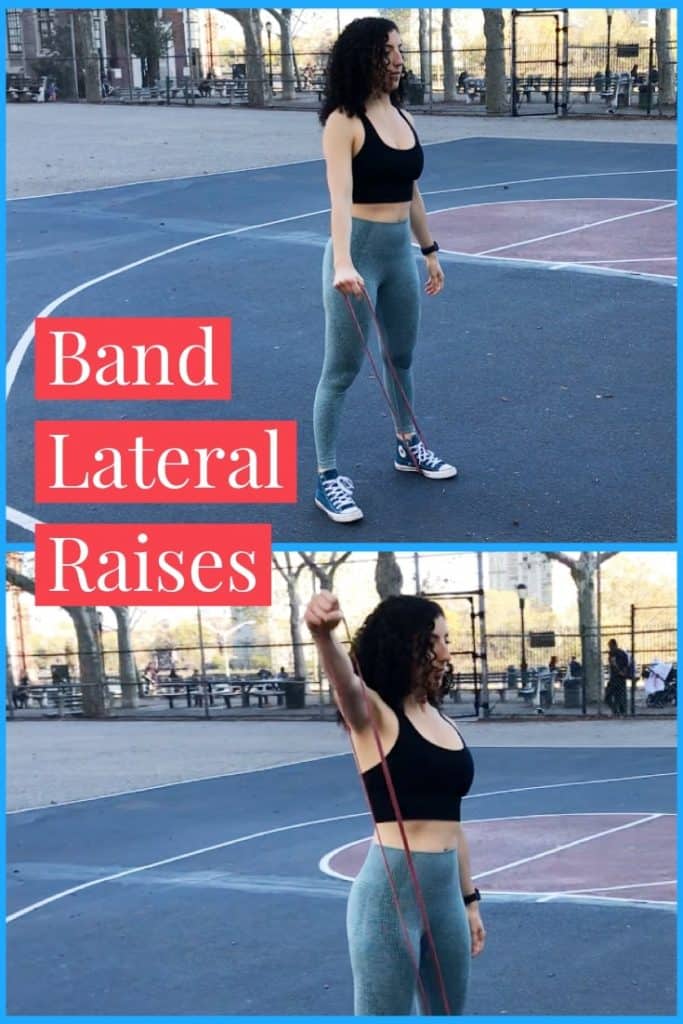
Tricep Pushdowns
Loop the band around a tall horizontal bar and grab the other end of the loop with both hands.
Extend your elbows down while keeping your elbows close to your sides.
Alternatively, you can just place the middle of the band over the bar and grab both loops for a more challenging variation.
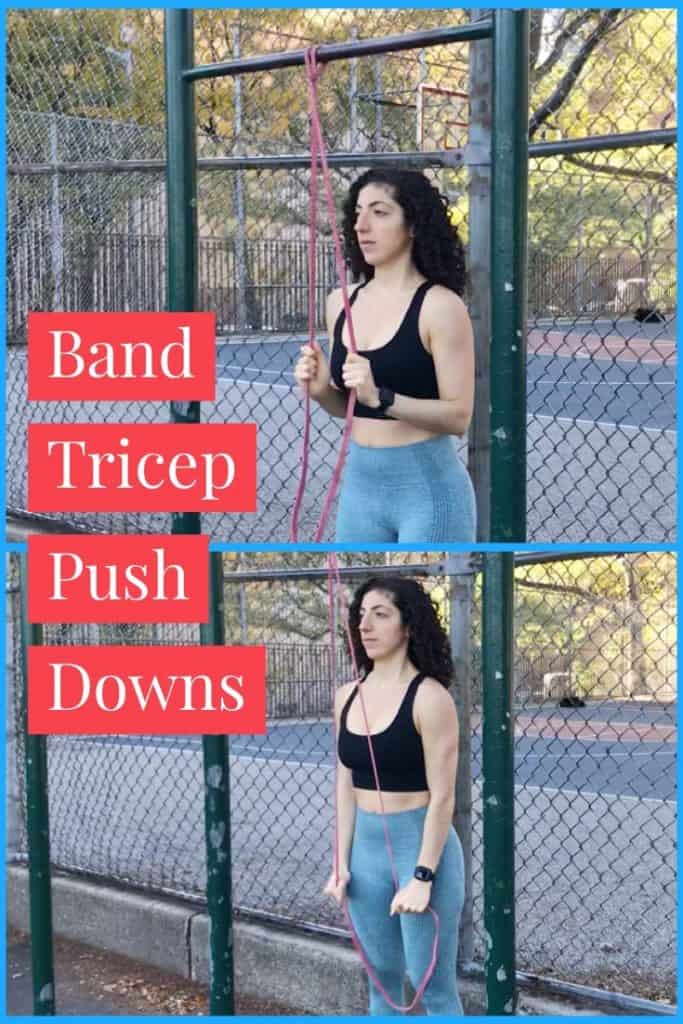
Overhead Tricep Extensions
Loop the band around a tall horizontal bar and grab the other end of the loop with both hands. Face away from the bar.
From here, lean forward to allow yourself enough room to flex and extend your elbows overhead.
Alternatively, you can just place the middle of the band over the bar and grab both loops for a more challenging variation.
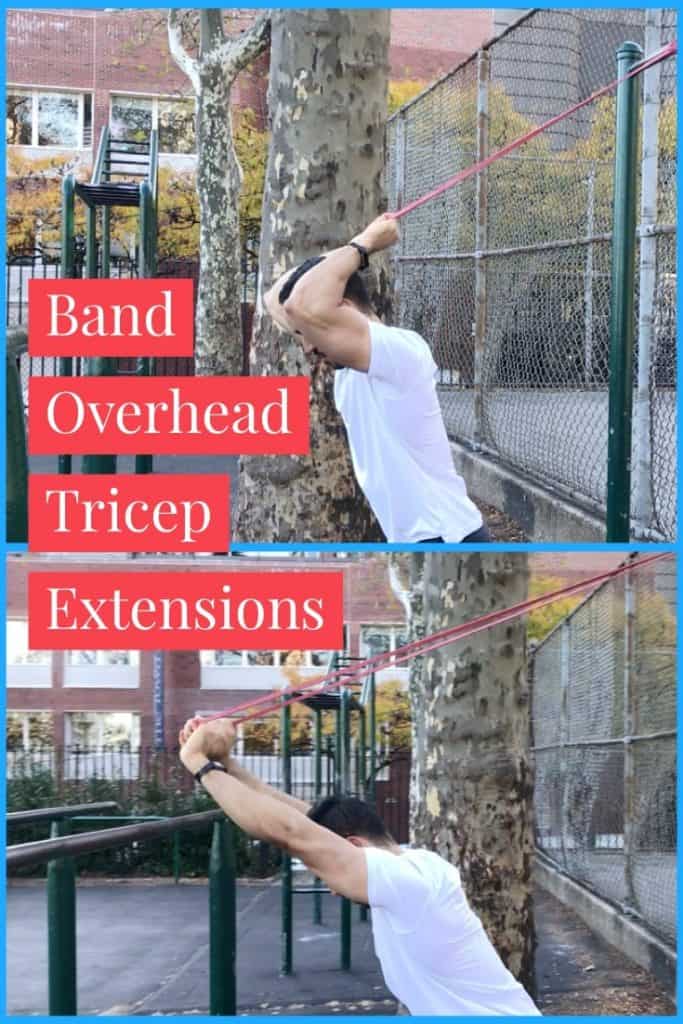
External Rotations
Loop the band around a sturdy pole and grab the other end of the loop. From here, rotate your forearm out and away from you while keeping your elbow in contact with your side.
Stand far enough away from the pole to ensure there is enough tension throughout the full range of motion.

Lower Body Compound Exercise Video
Lower Body Isolation Exercise Video
And here are the lower body exercises broken down by muscle group.
Resistance Band Exercises For Legs (Knee Dominant Patterns)
Front Squat
Stand on one loop of the band with your feet shoulder-width. Grab the other loop with your palms facing forward.
Perform the squat as usual.
It is best to use a stronger band for this exercise to make sure that there is enough tension at the bottom. (Rather than widening your stance which changes the exercises significantly).
Band Squats
Wrap the bands twice around your knees and stand slightly wider than shoulder-width. The remainder of the squat is the same.
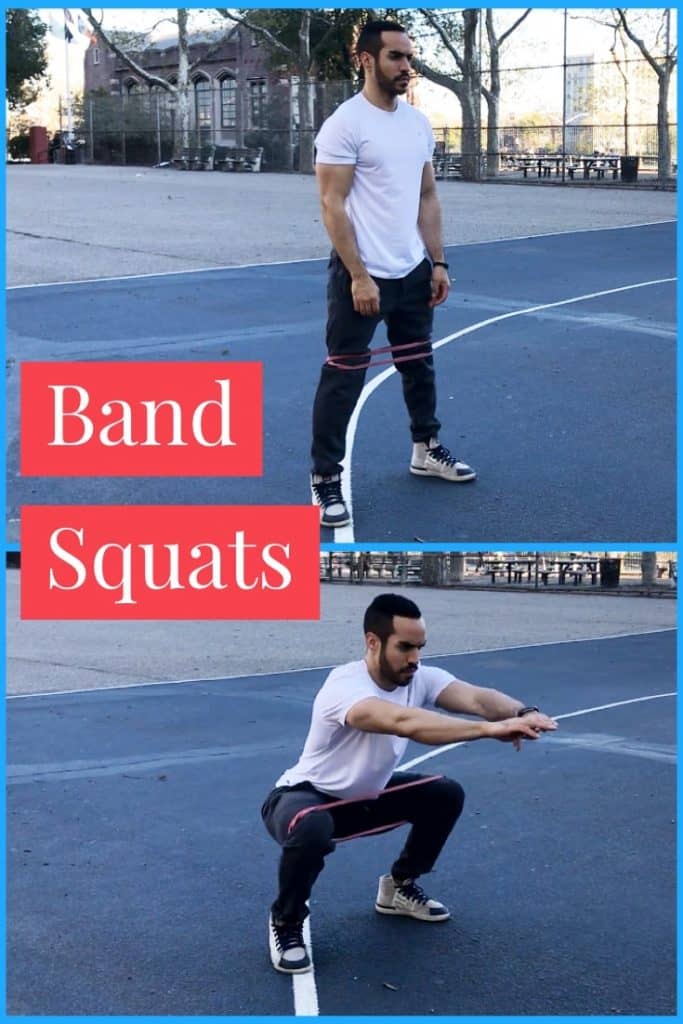
Lunges
This exercise can be done in a variety of ways. You can place one loop around your neck and the other loop on your back foot. From here, squat straight down so that both your front and back knee make 90-degree angles.
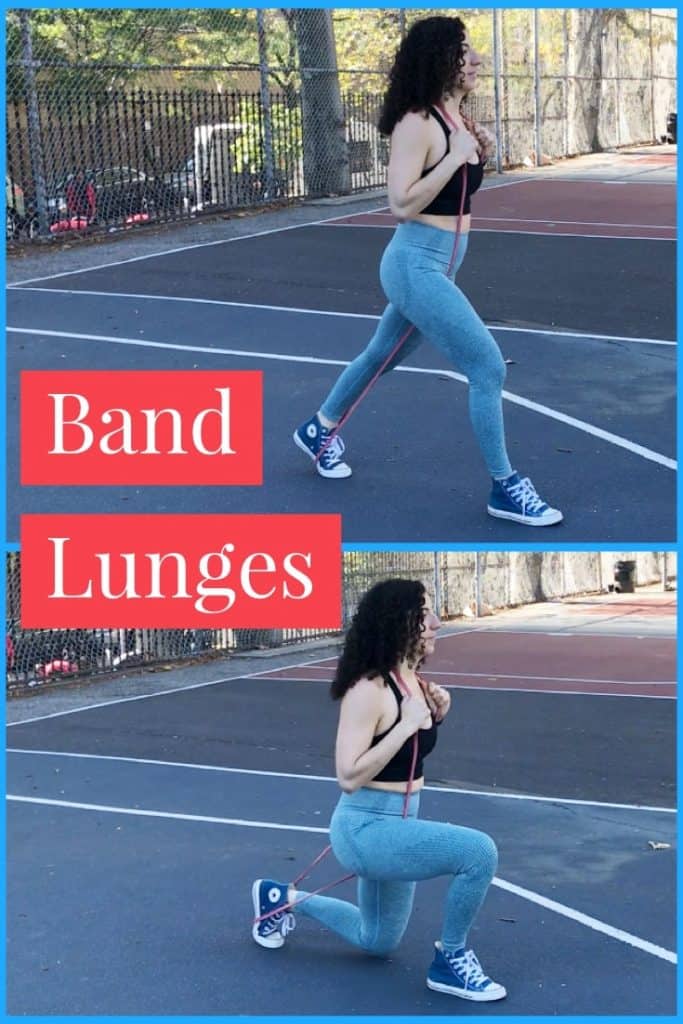
Resistance Band Exercises For Glutes and Hamstrings (Hip Hinge Pattern)
Deadlift
Stand in the middle of the band and grab both looped ends with your palms facing backward. Keeping your back straight, extend at the hips
It is best to use a stronger band for this exercise to make sure that there is enough tension at the bottom. (Rather than widening your stance which changes the exercises significantly).
Good mornings
Stand on one loop with a shoulder-width stance, and wrap the other loop around your neck. From here, push your hips back without bending your knees. You should feel a nice stretch in the hamstrings.
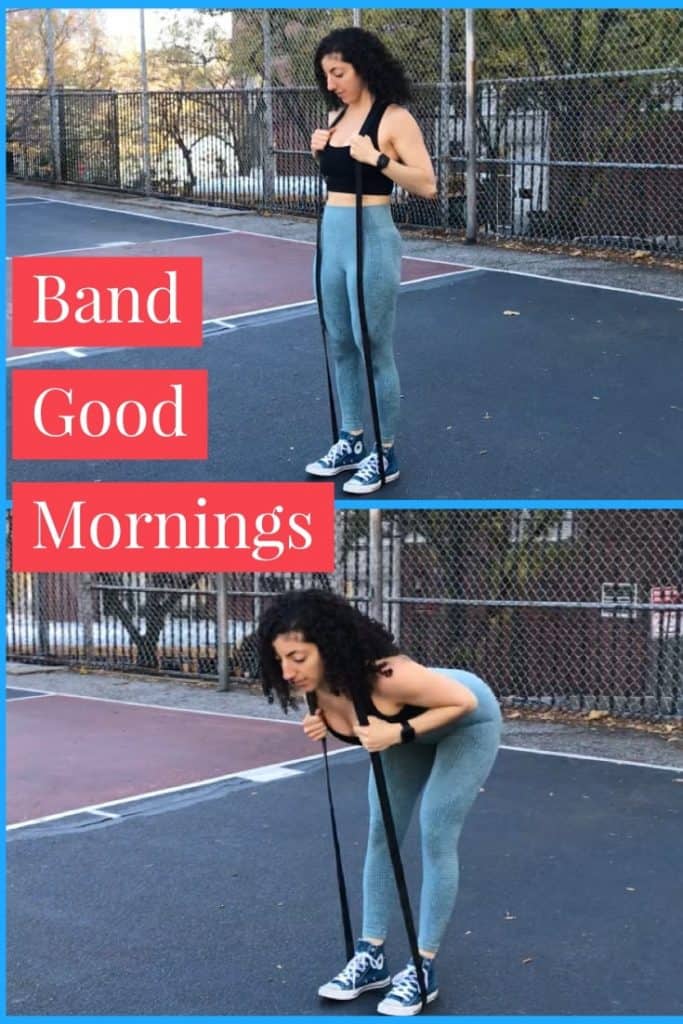
Banded Pull Through
Loop one end of the band around a sturdy pole and grab the other loop with both hands. From here, push your hips back and let your knees bend a bit.
You should feel a nice stretch along your hamstrings. Reverse the movement by extending at the hips.
Alternatively, you can just place the middle of the band around the pole and grab both loops for a more challenging variation.
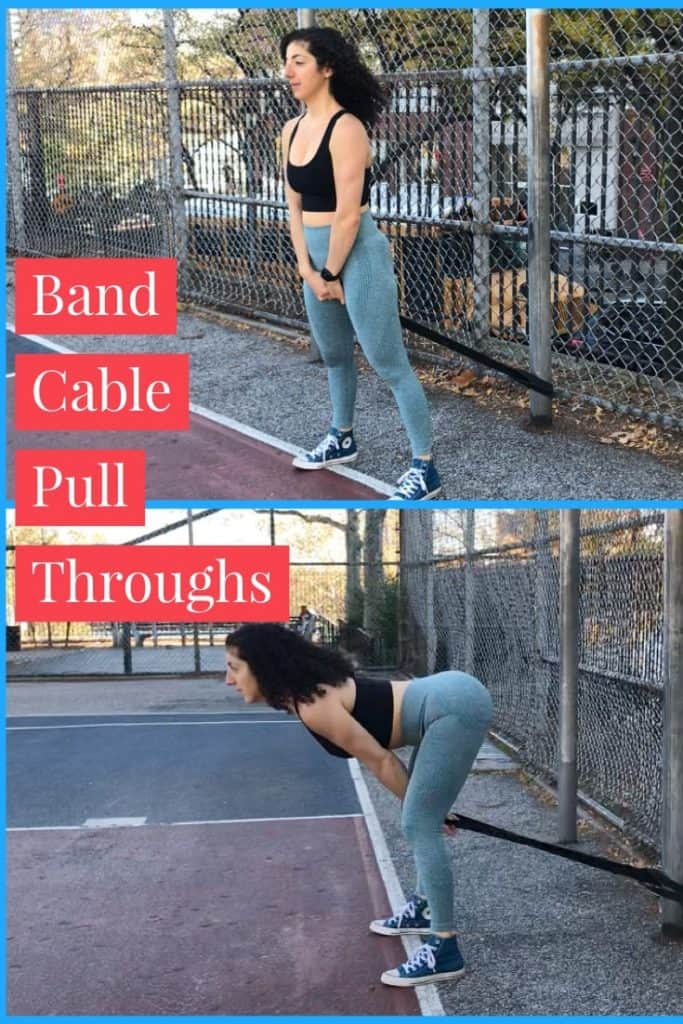
Resistance Band Exercises For Glutes
Glute Bridge
Lie on the floor with your knees bent and feet flat. Simply drape the band across your hips and firmly hold onto both ends with your hands.
Squeeze your glutes to extend your hips. Widen your hands to provide enough tension at the bottom of the exercise.
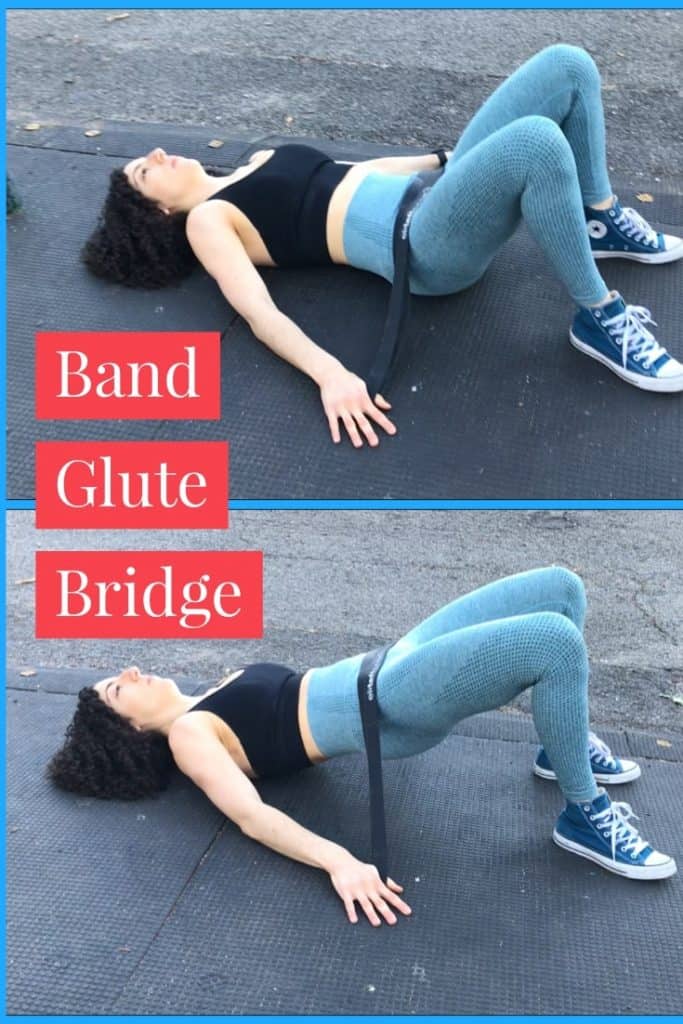
Lateral Band Walks
Wrap the bands twice around your knees and stand slightly wider than shoulder-width. From here, just walk sideways while in a semi-squatting position. Do both sides evenly.
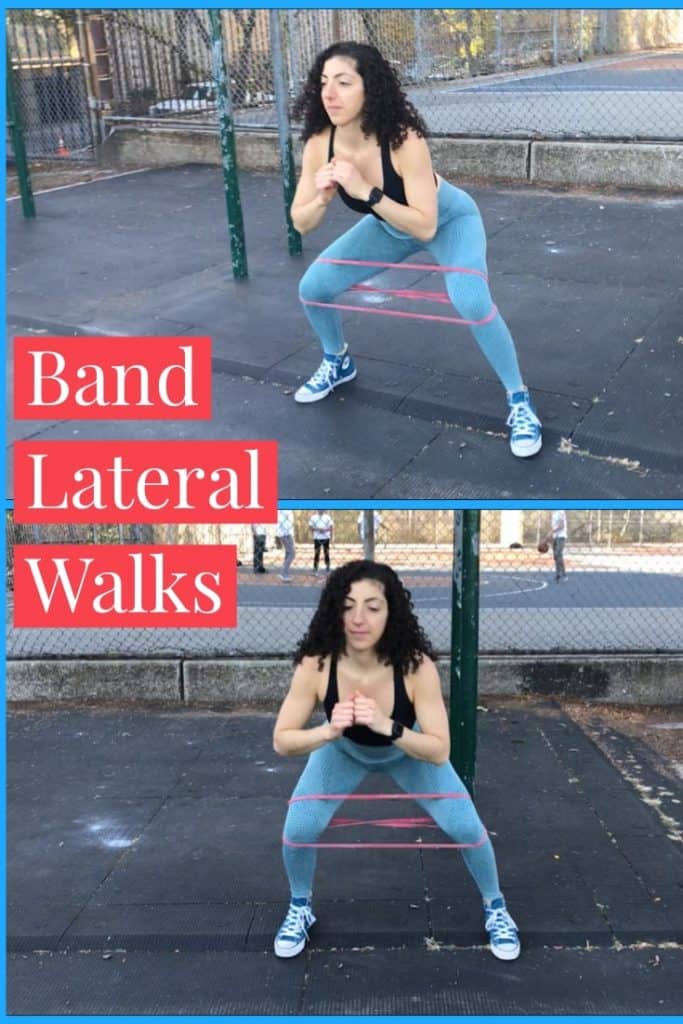
Single Leg Romanian Deadlift
Loop the band around a sturdy pole and grab the other end of the loop with both hands. From here, go into a single leg romanian deadlift by balancing on one leg, pushing your hips back, and keeping your spine neutral.
You should feel a stretch on the hamstring of the bottom leg.
Alternatively, you can just place the middle of the band over the bar and grab both loops for a more challenging variation.
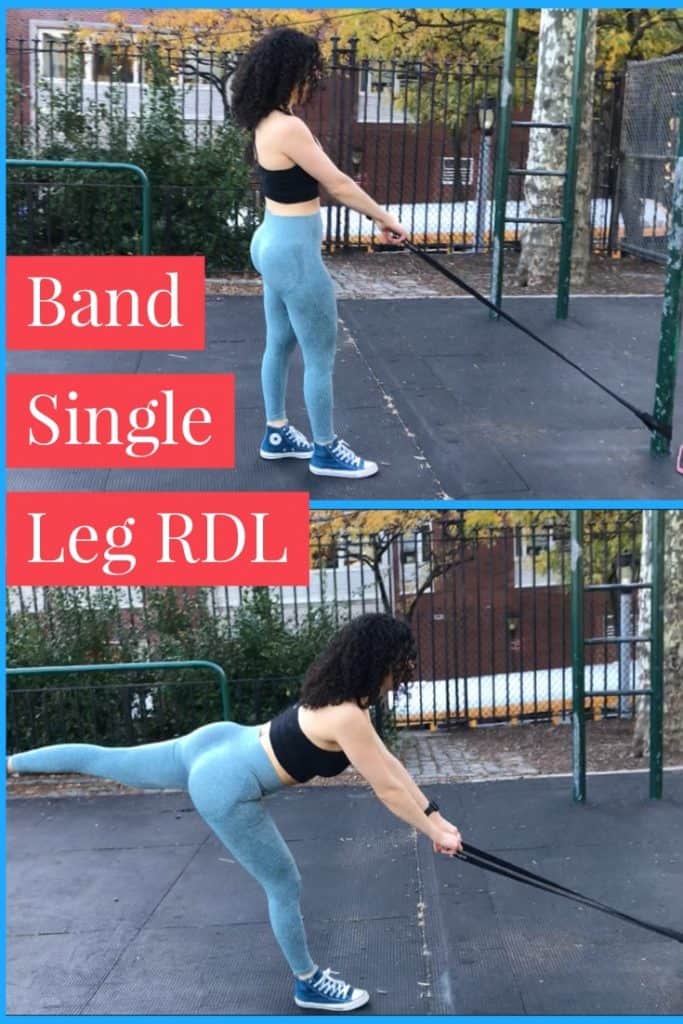
Resistance Band Ab Exercises
Here is a short video of three effective ab exercises you can do with
- Pallof Press: Anchor a band to a vertical pole and stand 1-2 feet away from it. From here press the band directly out in front of you so that the resistance is perpendicular to you.
- Knee Raises: Anchor a band to a vertical pole and lie on your back 1-2 feet away from it. Place your feet inside the other loop and raise your knees to your chest against the band.
- Rotations: Anchor a band to a vertical pole and kneel 1-2 feet away from it. From here pull the band toward you and rotate your torso in the opposite direction of where the band is located.
Other Ways To Use Bands In Your Training – Using Bands For Assistance
You can also use
The most common example is the pull-up.
You wrap the band against the
Similarly, you can use bands to help you to perform dips by looping a band underneath your legs.
Here’s what they look like.
You Can Also Combine Bands With Weights
This is an advanced strategy that should only be done once you are experienced enough. The purpose of this strategy is to accommodate resistance throughout the entire length-tension relationship.
When you add bands to barbell exercises, they provide very little resistance at the beginning of the exercise (where it’s hardest). As you progress through the range of motion, the band stretches and begins providing more resistance.
The bands will be fully stretched and provide the most resistance at the very top of the exercise- requiring you to maintain a high level of tension throughout the entire range of motion. [3]
This is particularly helpful for you if you struggle near the top, aka the lockout of weighted exercises.
But I repeat, do not try this until you have established a good foundation of fitness.
A Full Body 20 Minute Resistance Band Workout
Ok, now let’s put it all together. Here is a quick 20 minute workout routine to build muscle strength and size.
The best part is- you can do it anywhere with just 1-2 bands.
Workout A
| Exercise | Sets / Reps |
|---|---|
| Front Squat | 4 x 12 |
| Banded Push-Ups or Chest Press | 3 x 10 |
| Lat Pulldown | 3 x 12 |
Superset the banded push-ups and the lat pulldowns
Workout B
| Exercise | Sets / Reps |
|---|---|
| Deadlift | 4 x 10 |
| Shoulder Press | 3 x 8 |
| Bent Over Rows | 3 x 10 |
Superset the shoulder press and the bent over row
Workout C
| Exercise | Sets / Reps |
|---|---|
| Lateral Band Walks | 3 x 20 |
| Band Pull Aparts | 2 x 15 |
| Bicep Curls | 2 x 15 |
| Band External Rotations | 2 x 15 |
| Tricep Extensions | 2 x 15 |
Superset the band pull aparts and the bicep curls
and Superset the band external rotations and tricep extensions
A 6+ Month Workout You Can Do At Home
If you like the idea of working out at home, you should check out the WCT Home Workout Program.
It is a complete done-for-you workout program that takes you from an absolute beginner to… wherever you want it to take you.
The workouts are based around bodyweight exercises as resistance and resistance band exercises are also included.
No more gym memberships.
No more waiting for equipment.
No more commutes.
The workouts are designed to be done in ~20 minutes a day and provide you with numerous ways to progress.
Other Related Questions
How Do Resistance Bands Work?
When you lift weights, the movement tends to be the most difficult at the beginning or the middle of the concentric phase
For example:
- Pressing the bar off your chest on the bench press
- Standing up from the bottom of a squat
- Picking the barbell off the floor during the deadlift
Most exercises become a lot easier closer to the end-range of motion because you are able to produce more force as your muscle shortens/contracts.
The same is true for bodyweight exercises such as push-ups, pull-ups, squats, etc.
Bands are the complete opposite.
An elastic band will accommodate resistance. This means that they become more difficult at the top or during the end-range of the movement.
If you think about it, the top of the movement is when the band is stretched the most. The more the band is stretched, the more resistance it provides.
As a result, your muscles are being stimulated with varying amounts of tension throughout the full range of motion.
Do resistance bands build muscle or tone?
There is technically no such thing as toning. You can only build muscle and lose fat.
How Should I Train With Resistance Bands For Maximum Results?
As such, you need to design a workout program that targets all of the major muscle groups in your body.
This means you should include a few compound exercises involving both the upper and lower body.
You should also include some isolation exercises as well to help target some of the smaller, weaker muscles.
You also want to follow a specific training split.
You can choose to do an Upper/Lower body split, where you train upper body exercises on one day, and lower body exercises on another.
Or you can choose to do a Full Body Split, where you mix and match upper and lower body exercises on the same day.
You can’t go wrong with either approach.
Lastly, you want to keep track of your progress. Write down what exercises you performed and the number of sets and reps you accomplished on any given workout.
Whenever you repeat the same workout, find a way to make small but measurable progress.
For example, you can add 1 repetition per day.
Here’s what I mean:
Let’s say you did 3 sets of push-ups for 10 reps- your first workout will be
- Set 1 – 10 reps
- Set 2 – 10 reps
- Set 3 – 10 reps
The next time you repeat this workout, you can try
- Set 1 – 11 reps
- Set 2 – 10 reps
- Set 3 – 10 reps
Then the third time you do
- Set 1 – 11 reps
- Set 2 – 11 reps
- Set 3 – 10 reps
And so on.
There are many changes you can make. After that gets boring,
- you can add one more set
- you can perform a different variation
- you can swap the band (or add an additional band)
- you can decrease your rest periods
This is the principle of progressive overload, and the only scientifically proven strategy to keep making progress.
It may be slow- but fitness always has, and always will be a marathon, and not a sprint.
How Long Until You See Results From Resistance Bands ?
As with all types of exercise, seeing results depends on several factors.
- How often you are exercising
- How much you are exercising
- Your nutrition
- Your recovery
- Your starting weight and body fat percentage
- Your genetics
With that said, if you are consistently training and following all of the guidelines above, you should start seeing results in about 12 weeks.
Results will vary.
Wrap Up
So that’s how you use
What do you think?
Have you ever trained with
Comment below and let us know.
Related Articles On Strength Training & Building Muscle:
- 3 Basic Principles of Exercise You Should Know Before Working Out
- How To Build Muscle Naturally (Using Scientifically Proven Principles)
- How To Design Your Own Fitness Plan in 3 Steps

Alex Robles, MD, CPT / Brittany Robles, MD, MPH, CPT
Alex & Brittany Robles are physicians, NASM Certified Personal Trainers, and founders of The White Coat Trainer: a resource dedicated to improving the health and fitness of busy professionals using time-efficient strategies. Their advice has been featured in My Fitness Pal, Prevention, Livestrong, Reader’s Digest, Bustle, The Active Times, and more. Learn more about them here.
REFERENCES
1) Lopes, Jaqueline Santos Silva, et al. “Effects of training with elastic resistance versus conventional resistance on muscular strength: A systematic review and meta-analysis.” SAGE open medicine 7 (2019): 2050312119831116
2) Iversen, Vegard M., et al. “Multiple-joint exercises using elastic
3) Shoepe, Todd, et al. “The effects of 24 weeks of resistance training with simultaneous elastic and free weight loading on muscular performance of novice lifters.” Journal of human kinetics 29 (2011): 93-106.

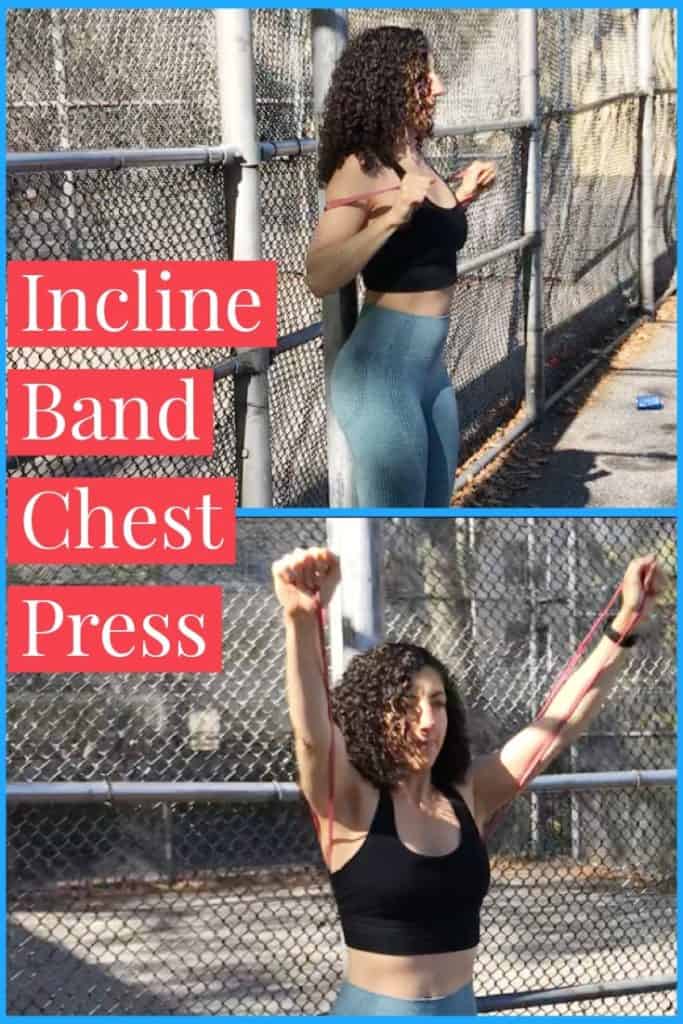
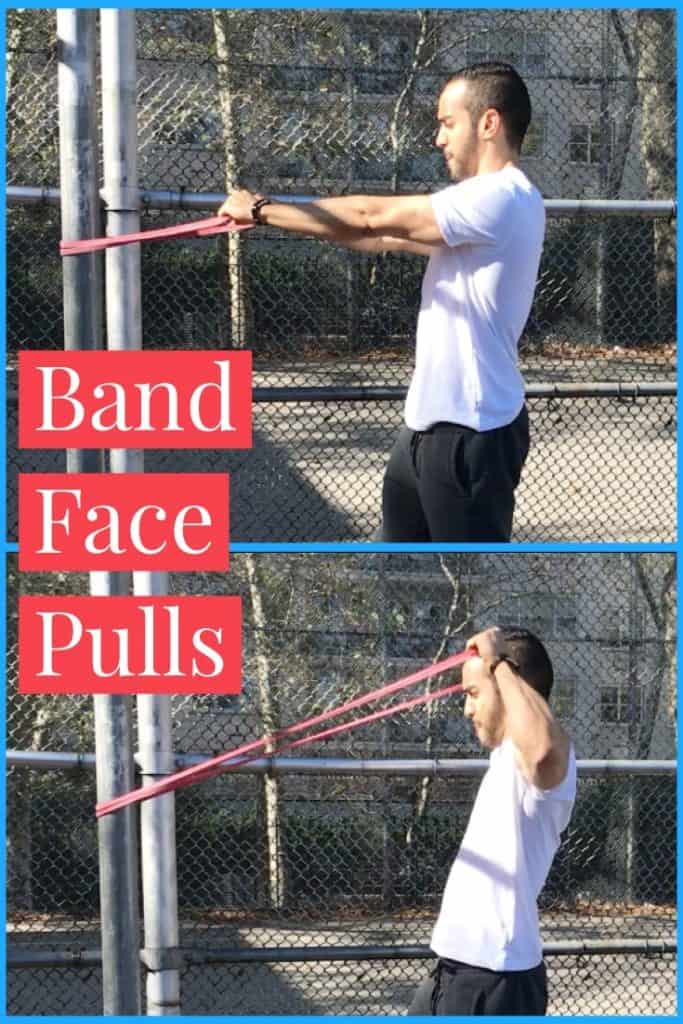
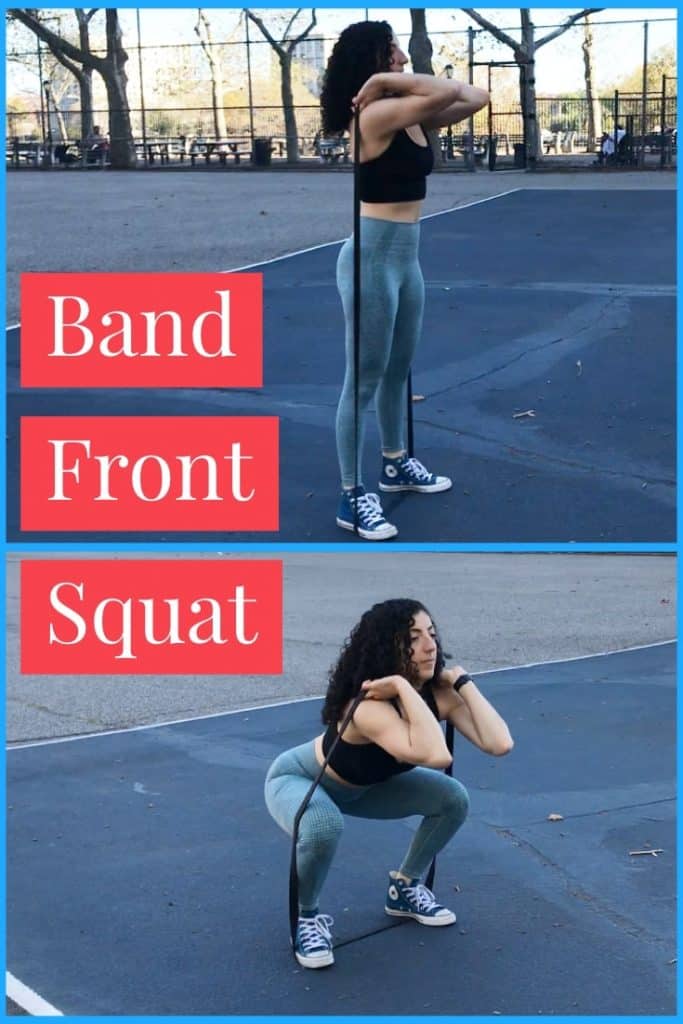
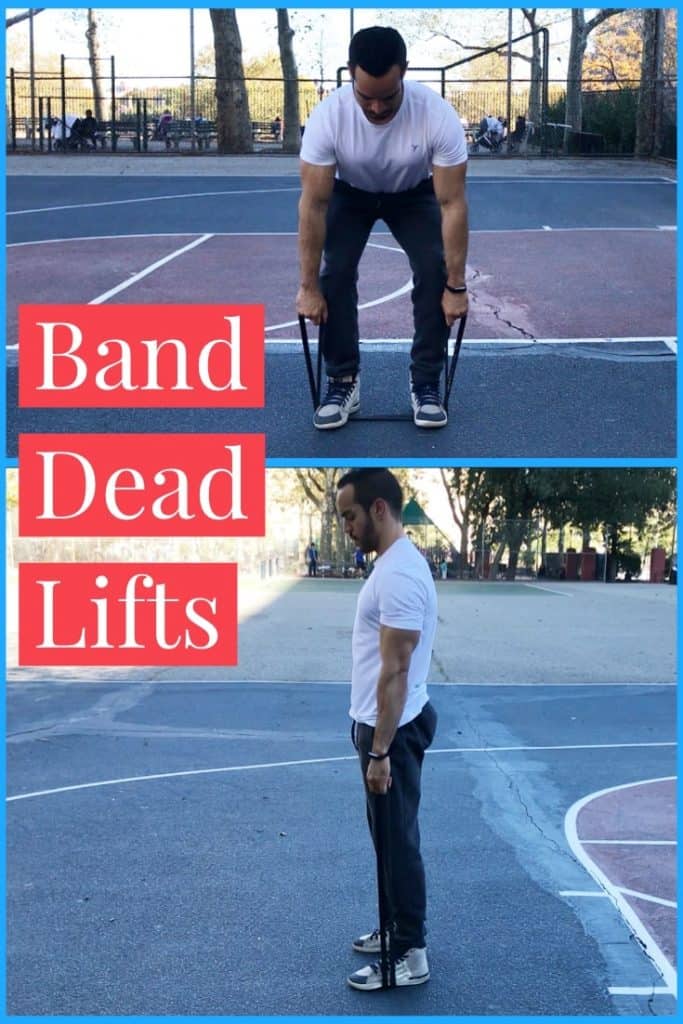
I workout at home and have been using resistance bands as replacements for weight on my barbell and cable type exercises. I have about 250 lbs of “weight” in resistance bands and do not find it limiting in what I can do and with various bands I get the the weight that I want. Working out at home, mentally at least, I find it safer as I can push myself without the worries of injuries of falling weight.
They are definitely the ultimate tool for versatility!
I agree with the article. I ditched gym going option 10 years ago for personal reasons and ve been training with bands exclusively. I’ve tried all kinds of techniques over that 10 years and still lost size. Bands are good, in fact excellent for a conditioning type of training. If you are a seasoned gymgoer, however, band training isn’t going to add much to what you have,m especially if it’s muscular hypertrophy you are after.
100 lbs band resistance IS different than 100 lbs weight resistance.
I keep hearing some of these so called experts touting band providing ‘constant tension’ while with weights, a movement gets easier at the end. Such a misleading( purposely or plain stupid ) comment. With 100 lbs bands, at the beginning of a movement, you DON’T get that heavy resistance. In fact, it feels easy ( Lots of band defenders say, get rid of slack. No, if you do with any heavy bands, you won’t be able to finish a movement all the way to the end because it gets too heavy halfway through ). I train with them because I have no other options at this time but there is just so much misleading info about band training out there.
I definitely agree with you. Perfect for beginners and intermediates, but definitely not as good as weights or advanced calisthenics for advanced athletes